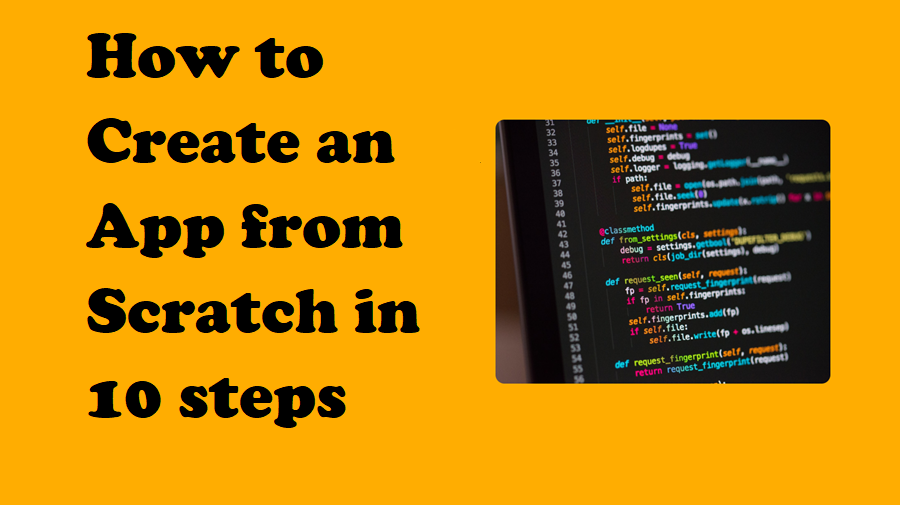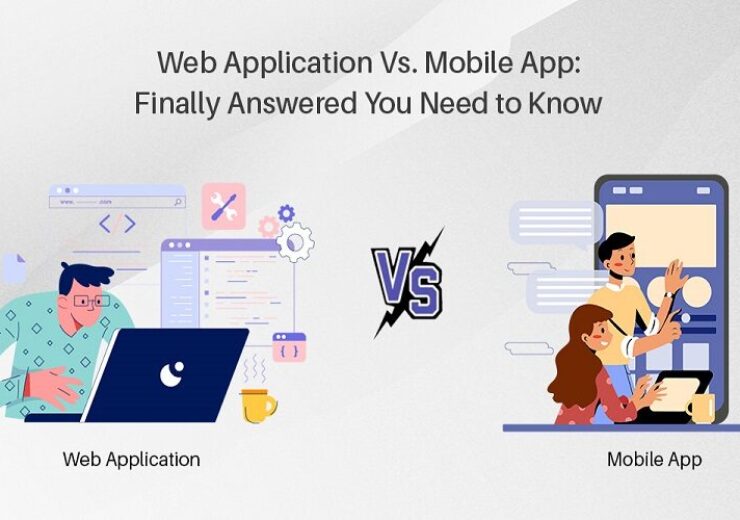How To Create an App from Scratch in 10 steps

Whether you’re creating your first app or your tenth, you might be interested in learning more about the process of developing an app from scratch, from conception to execution. In this comprehensive guide, we’ll walk you through all the steps needed to create your own app, including validating your idea and defining your target market to finalizing the design and starting to code the program itself. Let’s get started!
Step 1: Brainstorm and Research
Before you even open a text editor, start brainstorming and researching! Make a list of app ideas and figure out which one excites you. If possible, think about what problem or opportunity your idea is trying to solve or address. Take a look at other apps and see how they are solving similar problems.
Step 2: Write a Business Plan
If you don’t have a plan for your business, you should write one. A business plan will help you define your app idea and figure out if it’s viable or not. It will also give you a clear path for how to implement your app and make sure it gets developed. If you’re looking for some help creating a plan, there are a lot of great templates online that can get you started. Just be careful not to fall into analysis paralysis—focusing too much on planning what could go wrong or trying every possible way to improve your idea rather than implementing it (or doing anything at all). If you’re stuck on how to create an app with no guidance, here’s some advice on where to start!
Step 3: Hire a Team
If you are a one-person team, it’s easy enough to do everything yourself. But if you’re a team of two or more people, you’ll want to make sure everyone is on board and has specific responsibilities so that your project can move forward smoothly. You’ll need: A computer programmer (with at least three years of experience), an artist (who may or may not also be a developer) and someone who understands game marketing—you can’t have enough people working on your game if it’s going to be successful! We suggest making your recruitment process formal so that nothing falls through the cracks; a good way of doing that is by creating job descriptions for each position and posting them online. Then advertise these positions on sites like LinkedIn and Glassdoor.
Step 4: Work on the Prototype
Now that you have a rough idea of what your app will look like, it’s time to create a prototype. We recommend that you first sketch out ideas using Photoshop or Microsoft Paint. This will give you a good idea of how easy (or hard) your app will be to navigate through, and where your design flaws might lie. Once you’re happy with how your prototype looks, it’s time to take it into more serious territory—namely, investing in a development framework so you can program your creation and make sure that everything works smoothly. We recommend HTML5 as one of your best options—it is cross-platform compatible and allows developers to work on all types of devices.
Step 5: Marketing your Mobile Application
Before submitting your application, it is crucial that you market your application as much as possible. Because apps can be installed directly on a user’s device, they can easily become uninstalled and forgotten. With more than 300,000 applications available in both Apple and Android stores, you need to make sure your app will stand out among its competitors. Here are some tips for marketing
Step 6: Distribution (iOS/Android)
This is where it’s at! If you’ve ever wanted millions of people to use your app, then you have no choice but to go through either Apple’s or Google’s stores. The bad news? Apple and Google take a massive 30% cut of all app sales made in their stores. So if your awesome new mobile game is selling for $0.99, after Apple/Google takes its cut, you’re left with only $0.69 per download! Considering that most apps are priced below $2.00, can you imagine how hard it is for devs who rely on mobile game sales alone? We can use platfomsm like flutter or React – Native Development.
Step 7: Monetize the App
Maybe you’re planning on keeping your app for yourself, and maybe you’re going to go all-in with your new creation. Either way, it’s time to monetize your app. Some ways of doing so are advertising, selling downloads or charging for upgrades. You’ll need a business model that suits your app’s function; ask yourself what purpose it serves and how people will want to pay for it or get more value out of it over time.
Step 8: Improve the Design, Functionality, Performance of your App
You will have a number of different features that you are trying to accomplish. An e-commerce app will be very different than a gaming app, for example. You need to decide what is most important for your product and your users. Does it need WiFi capability? Access a user’s data from their existing social media platform? Once you have decided what your key features are, work out what they will do and how they will achieve those goals. Make sure that you discuss these with other members of your team so that everyone understands what needs to be done and by when. If there is any doubt about how something should work, then don’t implement it until you can agree upon it or at least accept that both sides have understood one another correctly!
Step 9: Test with Users (Usability Testing)
Now that you’ve got a working prototype, it’s time to test with users. Ideally, you would find potential customers who match your target customer profile and test with them (you can usually do so for little or no money). User testing lets you see how they use your product. It’s important to identify problems before you launch because if people aren’t using your app, then it’s not very useful. User testing is about learning about: functionality (can people use it?), performance (is it slow?) and design/usability issues (is it intuitive?). If something seems off, change your app until testers are able to easily navigate and do what they need.
Step 10: Track Progress and Ship it!
You’ve put a lot of work into developing your app, but if you don’t use it you won’t be able to tell how people will react. So if you can afford it, now is a good time to start paying for access to various analytics tools. This can help you track whether users really find value in your product and how they interact with it. If nothing else, knowing what people are doing inside your app could lead to new features or even entirely new apps! Good luck!




